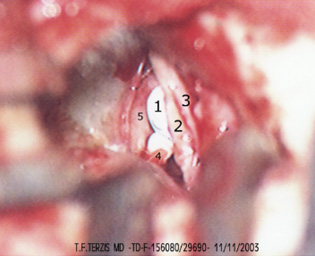Tympanoplasty and Ossiculoplasty
In chronic otitis there is usually a defect in the eardrum (perforation), through which the ear may regularly discharge purulent fluid.
The perforation of the ear drum is repaired by means of a thin membrane, which is called fascia, and is harvested by the surgeon from an appropriate area behind the ear. This membrane is placed under the perforation and with time is fused with the eardrum remnant. The operation is called tympanoplasty and is performed under general anaesthesia. Typically it lasts for about an hour and requires one night stay in hospital.
If there is also erosion of the little bone (ossicles) behind the perforated eardrum, the surgeon repairs the defect with special implants and/or cartilage from the pinna, and the operation is called ossiculoplasty.
After the completion of the healing period, usually in a month’s time, the ear is watertight, does not discharge anymore and the hearing improves.

